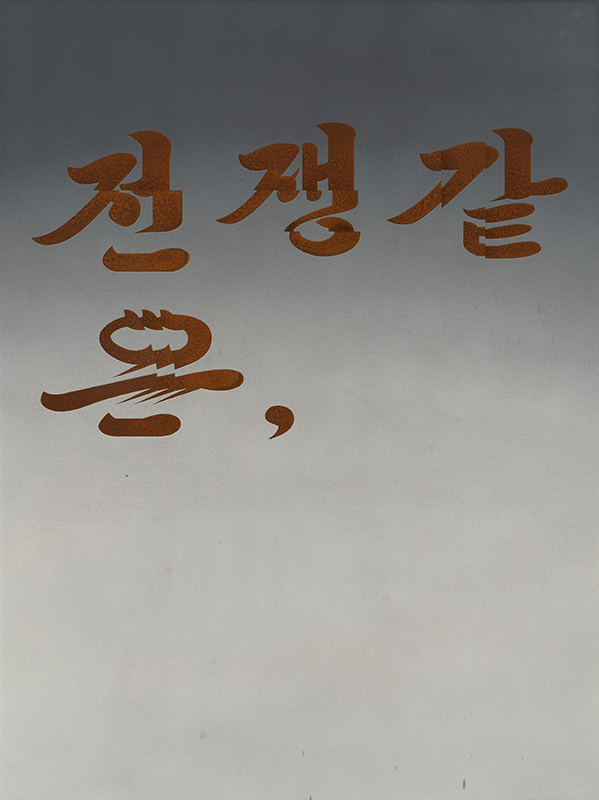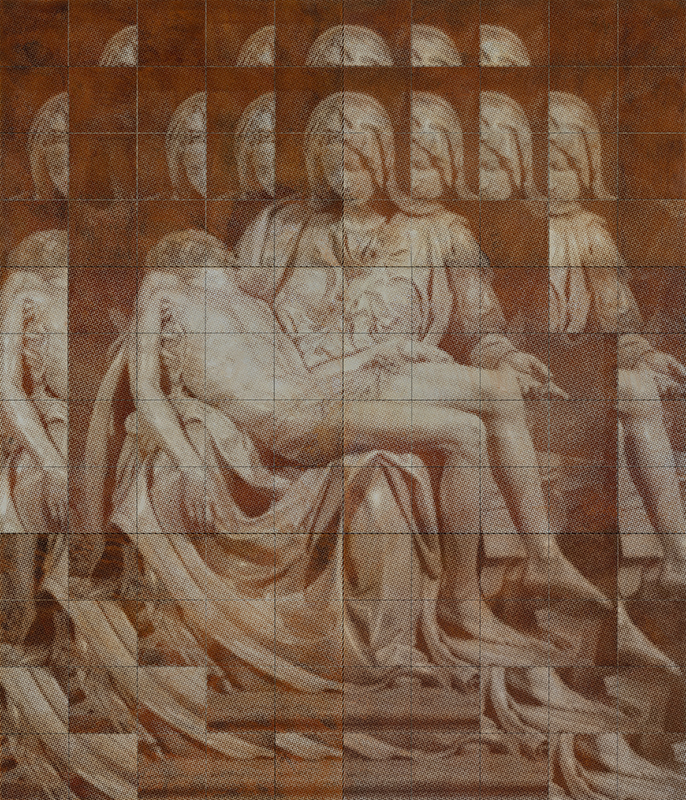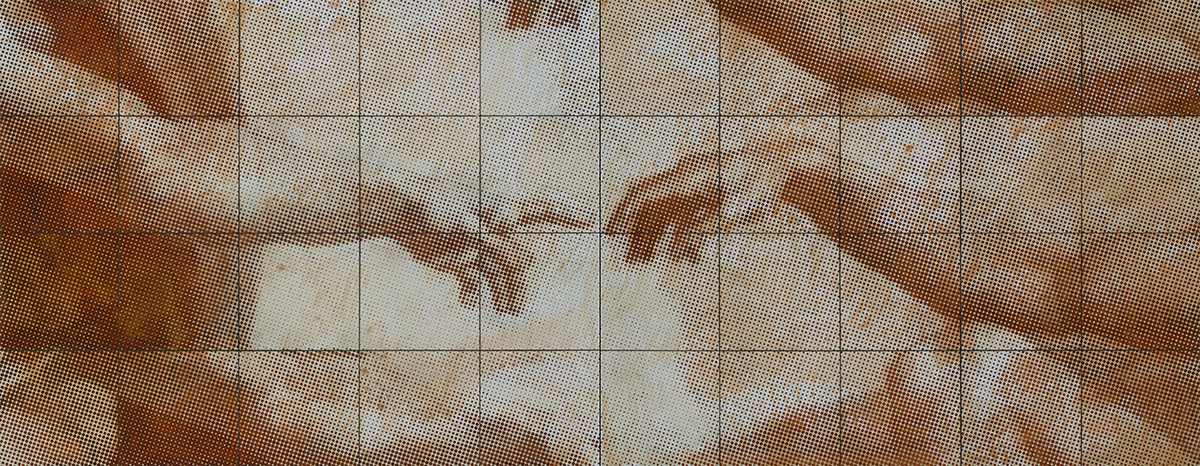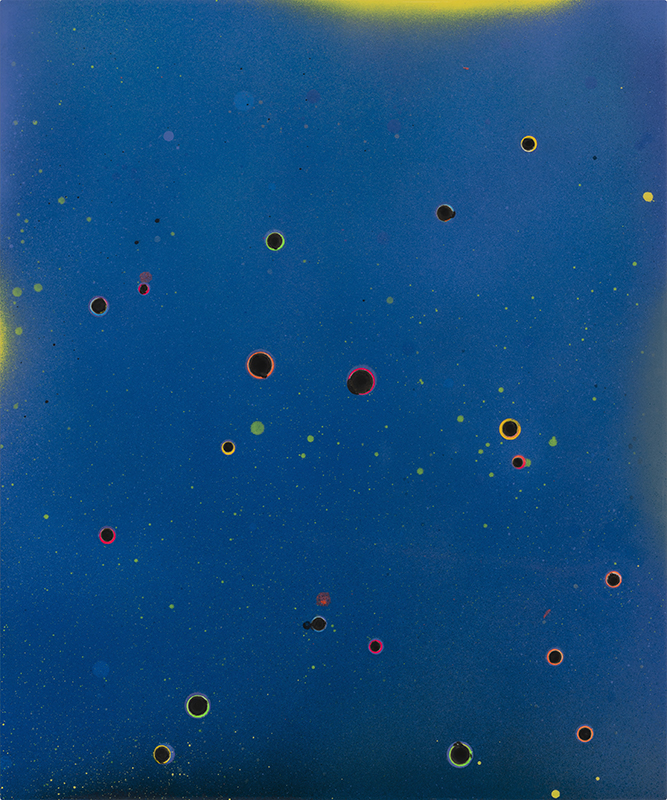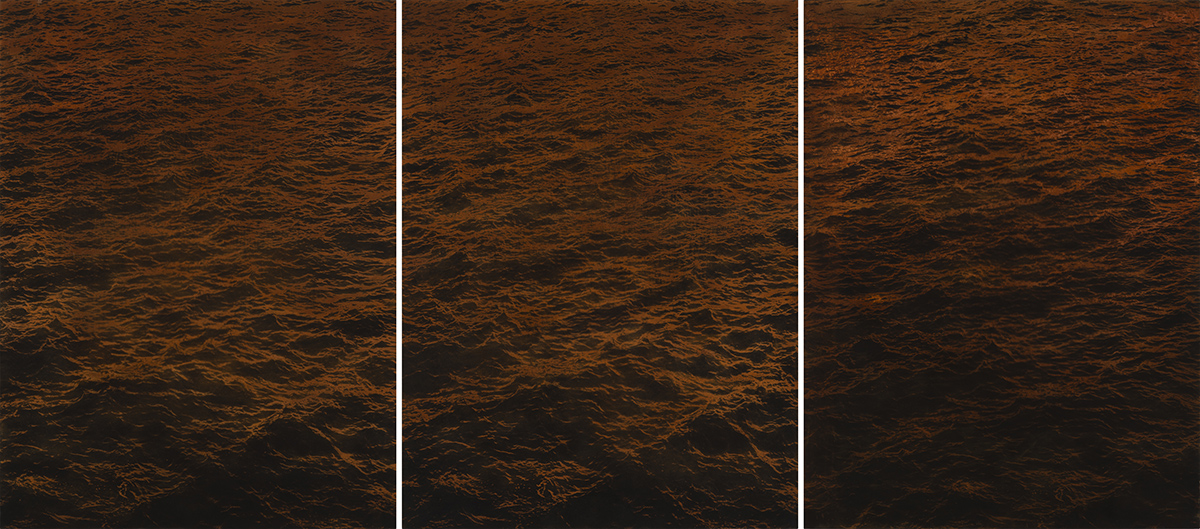Seventeen paintings of lyrics extracted from anthems, war songs, and ballads hang all over the exhibition’s three floors. In the absence of a melody or a beat, the works articulate harmony through color. The shift of mediums from sonorous to visual, though, is a break from one form of impermanence for the other. Proclamations of love sung in the context for country, religion, or person become utterances indistinguishable from daily life.
It’s this tension of a costly exchange to create something new that punctuates the show; how repetition becomes recreation and effects a loss, paradoxically, for preserving the relics we hold dear. In the way that metaphors — doomed to become cliché — are made to reiterate a simple “I love you,” Choi traces the inevitable trajectory beginning with cultural chants over to iconography and myth.
Amid the oil paintings hangs a silkscreen image of a reconstituted Pieta. Elsewhere in the exhibit is Creation of God, after another work of Michelangelo’s and likely the most provocative, which inverted the positions of Adam’s and God’s hands. This photo manipulation, displayed as halftone fragments, has the appropriated Pieta and Creation appear as gestalts, pulling the focus away from the original subjects and toward the visible configuration of their parts.
The series Better Than Future, on the other hand, offers a counterpoint to such control by stressing the physicality of the medium — how the material resists. In the production for each work, a magnet was tossed onto a steel plate and then painted over. The sixteen images displayed are as much the results from chance and randomness as they are from compulsion, magnetism, a ‘push and pull.’
The triptych of the ribbed sea, entitled after Nietzsche’s quote, Perhaps We Shall Meet Again But Fail to Recognize Each Other may provide a sense of finality to this exchange, if only in hindsight. Unlike the appropriated images, the image is not split nor divided; the screens are three separate figures, new identities emerging from the flux.
One Kiss is on view from February 11 to March 8, 2020 at One and J. Gallery.


